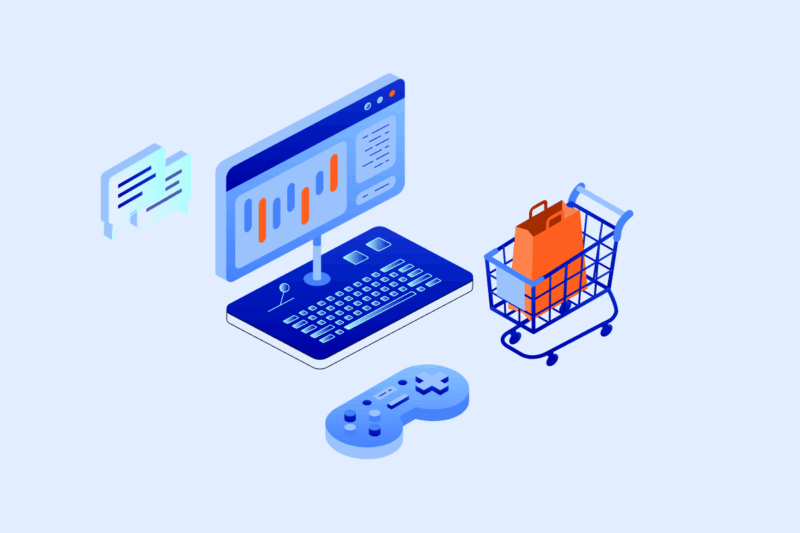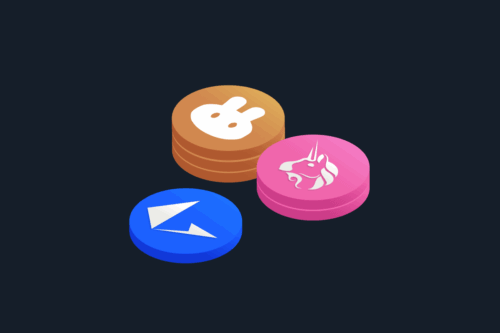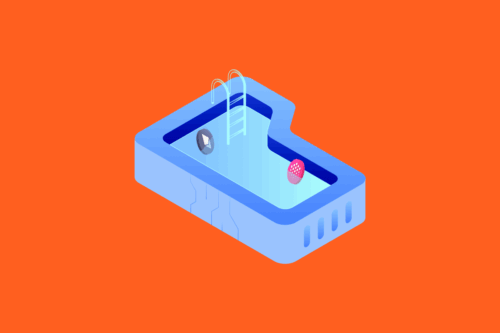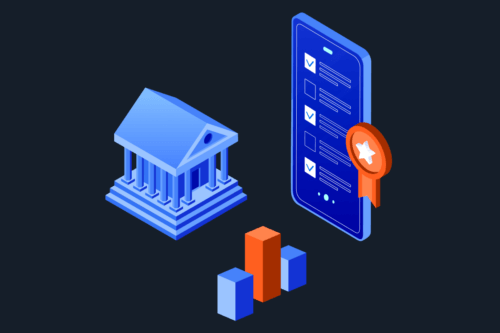
Decentralized applications (or dApps) are one of the most promising applications of blockchain technology. The same decentralized architecture that drives cryptocurrency payments can be used to create completely decentralized applications. This piece will take a look at what dApps are and how they differ from regular apps. It will also explore the advantages and limitations of dApps, and highlight a few popular dApps in the crypto space.
What is a dApp?
dApps are applications that are built and operate on decentralized networks. dApps provide users with similar features to those offered by traditional consumer applications (i.e. the apps you use on your phone) but provide users and developers with a far greater degree of autonomy and control.
Decentralized apps aren’t exclusive to the blockchain ecosystem — the term “dApp” is a recently coined term used to refer to decentralized applications that run on blockchain networks, but dApps have existed in several different forms for decades.
Some of the earliest online applications can be considered as dApps. Internet Relay Chat (IRC), first developed in 1988, allows anyone to create decentralized chat servers and is still in use today. BitTorrent, the first user-end client for accessing peer-to-peer file sharing through the BitTorrent protocol, is another example of an early decentralized app.
Used in the context of blockchain and cryptocurrency, however, the term dApp refers specifically to open source applications that provide users with a front-end user interface that connects to a back end operating on a decentralized peer-to-peer (P2P) network, such as the Ethereum blockchain.
The blockchain-centric nature of dApps within this context means that modern dApps are designed to streamline the ways users interact with blockchain networks. dApps can be used to access decentralized finance (DeFi) ecosystems, play blockchain-based games, or participate in decentralized social media networks.
Key Takeaway
A dApp is an application that runs on a decentralized blockchain. Using dApps, people can access DeFi services, play games, and use decentralized social media networks.
What is the difference between a dApp and an app?
dApps hold the potential to decentralize virtually any application. The key difference between dApps and “traditional” applications is centralization — dApps are inherently decentralized, which means they aren’t operated by any single entity or central authority.
An Uber user, for example, will interact with the Uber application via their smartphone in order to book rides and pay for them. The Uber app communicates with a server operated by Uber and connects with centralized payment processors to facilitate payments.
A hypothetical ride-sharing dApp that performs the same function as Uber would operate on a decentralized blockchain network as a series of smart contracts. The dApp serves the function of allowing the user to interact with these smart contracts, with payments made via cryptocurrency. The decentralized ride-sharing app would have no need for centralized servers to operate back-end code, nor would it need third-party payment processors. The dApp user would retain full control over the cryptocurrency they use to pay for rides and can specify exactly how much personal data they want to share with the dApp.
DeFi dApps operate on similar principles, allowing users to access a wide range of financial services and products without the need for third parties or traditional financial institutions.
Key Takeaway
dApps are very similar to the traditional apps on your phone or computer, however, they are built in a way that is highly accessible, censorship-resistant, and allows for greater security and privacy for the user.
What are the key advantages of dApps?
There is a range of advantages to using dApps, such as:
- Security. Decentralized applications leverage the immutable and tamper-proof nature of blockchain networks, eliminating the threat of hackers or data breaches.
- Trust. When you use a traditional app, you’re trusting a third party with your data and finances. dApps, however, are completely “trustless” and rely on code, rather than a centralized authority, to enforce rules and execute transactions.
- Access. dApps are censorship-resistant and open to all, allowing anybody to access decentralized financial solutions or other use cases that may be otherwise unavailable.
- Dynamic development and governance. dApps are open source, which allows developers to innovate upon each other’s work to create new types of services and applications, or allow users and developers to collaborate and vote upon updates and improvements.
- Interoperability. dApps built on the same network, such as Ethereum dApps, can interact with each other in unexpected and synergistic ways, creating interoperable systems that use the same highly fungible assets.
What are the limitations of dApps?
Decentralized applications are already in use today, with some DeFi dApps facilitating billions of dollars in transactions on a daily basis. There are, however, a number of factors that prevent dApps from reaching the same level of adoption as traditional apps.
The scalability problem is the most important obstacle standing between dApps and mainstream adoption. The most widely-used dApps online today operate on the Ethereum network, which can only process a limited number of transactions per second. Almost every action executed on a dApp requires a transaction on the network it operates on, which therefore limits the total number of users a dApp can support at one time.
If one dApp operating on the Ethereum network uses too many computational resources, the entire Ethereum network can become congested. This congestion can significantly increase the cost associated with sending a transaction on Ethereum, which is passed on to the end-user.
Important to Remember
The upcoming Ethereum 2.0 upgrade will make massive improvements to speed and efficiency, which will significantly increase the scalability of dApps built on the Ethereum platform. Other platforms, such as Avalanche or Solana, might also provide developers with solutions to this problem.
Popular and successful dApps
DeFi dApps are currently the most widely used type of dApp online today. Other active dApps that can be used today include NFT marketplaces and decentralized cryptocurrency exchanges. Examples of highly popular and widely-used dApps include:
- UniSwap: A DeFi exchange and ecosystem that allows users to buy, sell, or trade ERC-20 tokens without platform fees or third party intermediaries. UniSwap is used to launch new tokens, trade tokens, or earn liquidity provider fees.
- Compound Finance: Like UniSwap, Compound Finance operates on the Ethereum blockchain. Compound provides DeFi features that allow users to lend cryptocurrency to earn interest, take out cryptocurrency loans, or access high yield cryptocurrency savings accounts without the need for a centralized arbitrator.
- OpenSea: A peer-to-peer marketplace that allows users to trade NFTs or collectible digital assets, or create NFTs through a streamlined interface.
Summary
dApps provide users with a simple, easy-to-use frontend that can be used to interact with blockchain-based applications. Unlike traditional applications, dApps are censorship-resistant, trustless, and highly interoperable whilst also providing real-world use cases. While the blockchain technology that drives decentralized applications can not yet support widespread adoption at scale, dApps are already responsible for the transfer of billions of dollars in value on a daily basis and are positioned to take a ubiquitous role in all industries as blockchain scaling solutions are developed and implemented.
If you would like to learn more about decentralized finance, Ethereum, or smart contracts, there is plenty more great content on Swyftx Learn!
Next lesson
Disclaimer: The information on Swyftx Learn is for general educational purposes only and should not be taken as investment advice, personal recommendation, or an offer of, or solicitation to, buy or sell any assets. It has been prepared without regard to any particular investment objectives or financial situation and does not purport to cover any legal or regulatory requirements. Customers are encouraged to do their own independent research and seek professional advice. Swyftx makes no representation and assumes no liability as to the accuracy or completeness of the content. Any references to past performance are not, and should not be taken as a reliable indicator of future results. Make sure you understand the risks involved in trading before committing any capital. Never risk more than you are prepared to lose. Consider our Terms of Use and Risk Disclosure Statement for more details.


 Article read
Article read





